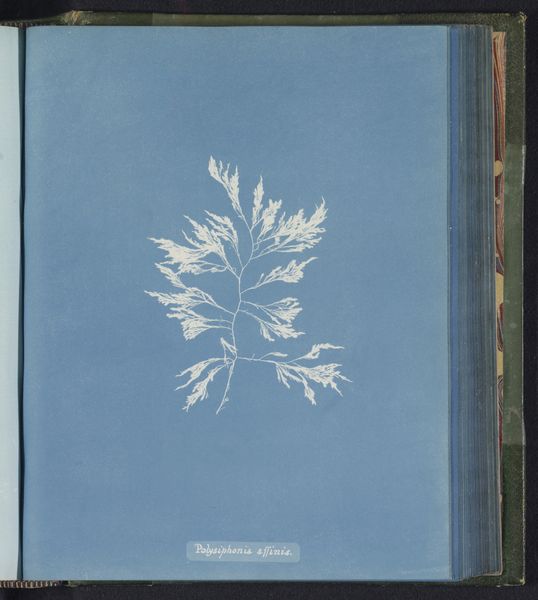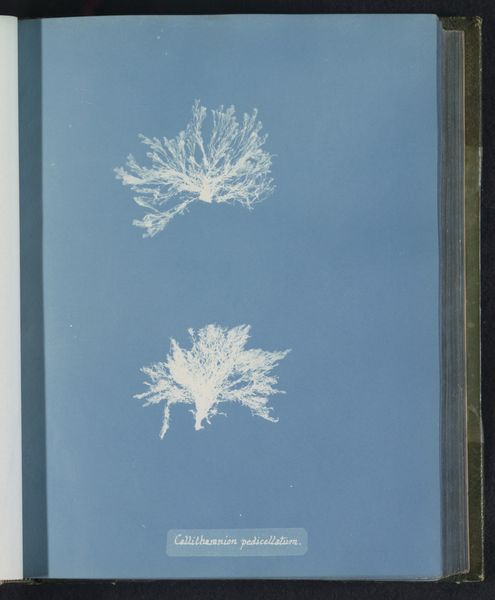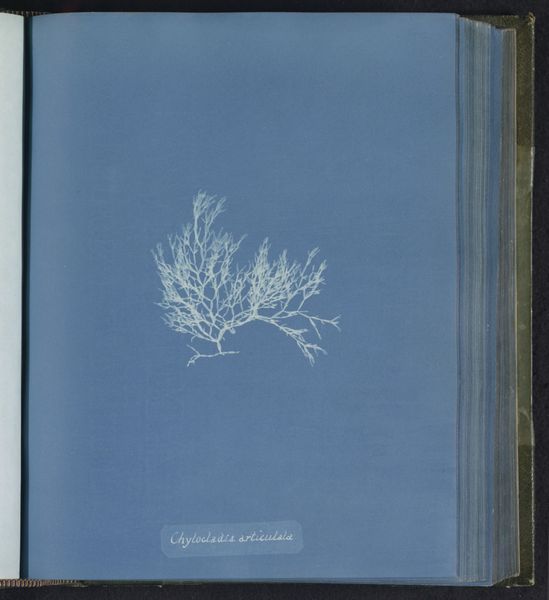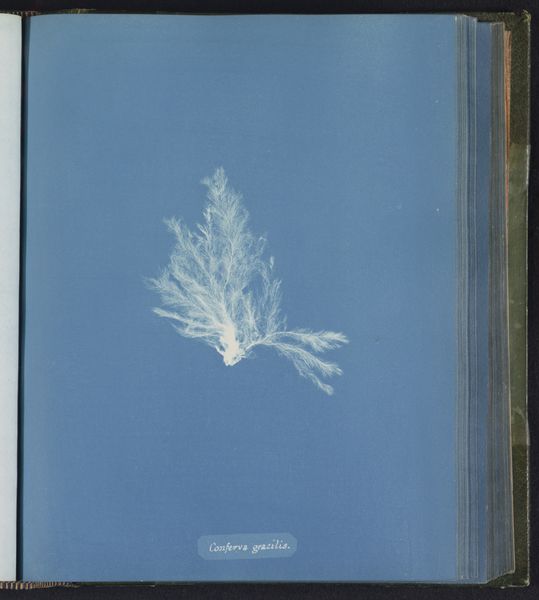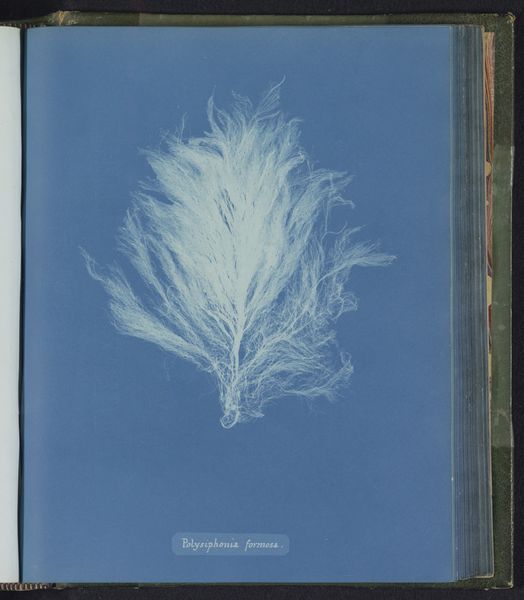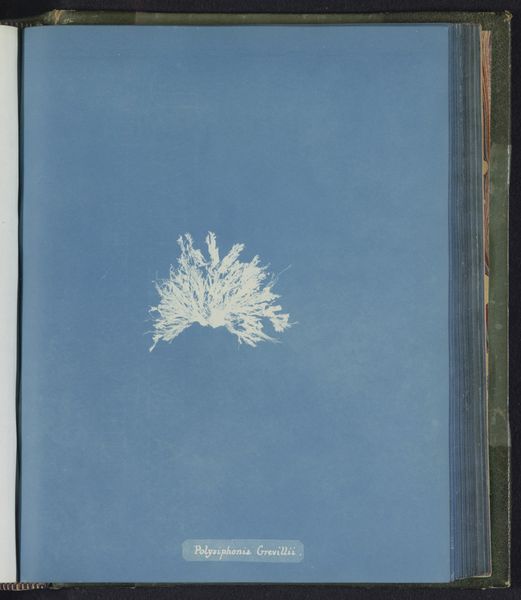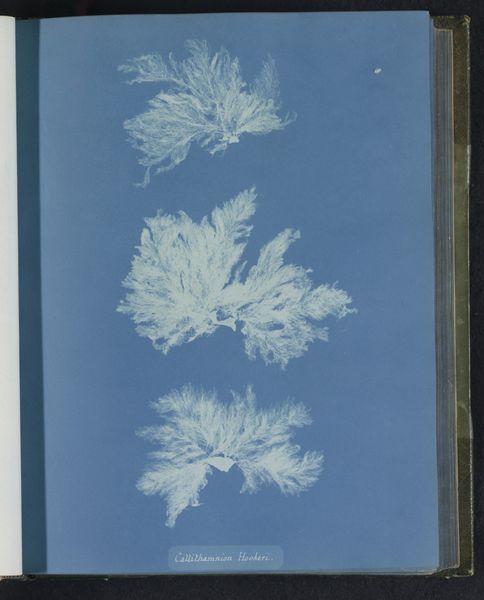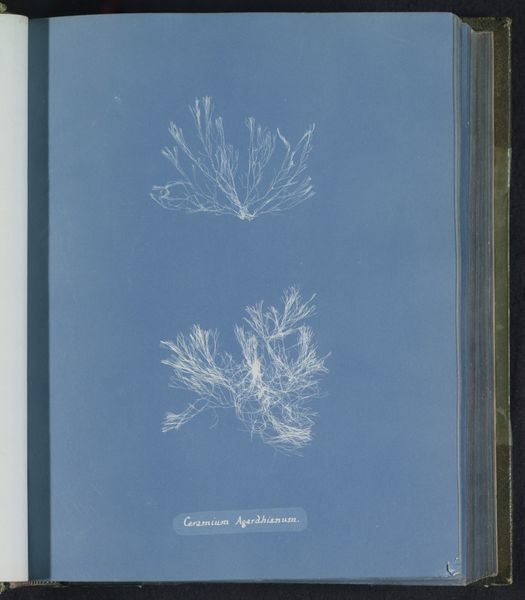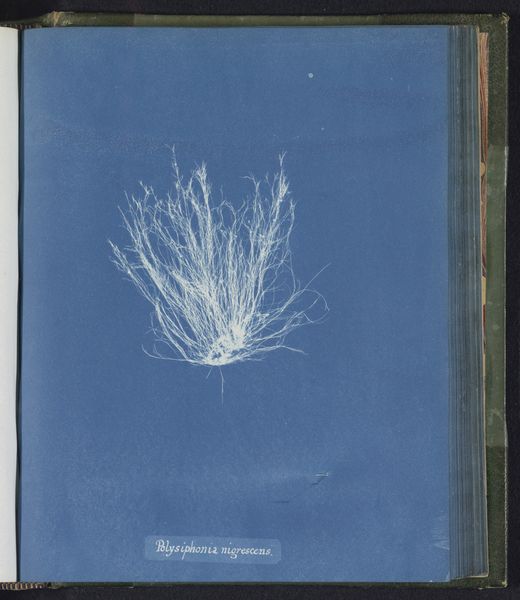
print, cyanotype, photography
#
still-life-photography
# print
#
cyanotype
#
photography
Dimensions: height 250 mm, width 200 mm
Copyright: Rijks Museum: Open Domain
Curator: Here we have Anna Atkins' "Conferva carnea," a cyanotype from approximately 1843 to 1853. Editor: It strikes me immediately as ethereal. That deep Prussian blue against the delicate, almost ghostly white of the seaweed is mesmerizing. It feels so different from the highly manipulated images we see daily. Curator: Absolutely. The cyanotype process itself, using iron salts and sunlight, lends it that characteristic blue. What’s interesting is placing this within the history of photography; Atkins' work is considered some of the earliest examples of photography, and predates many canonical images produced by men! Editor: And what a radical act – a woman contributing significantly to science through art, especially in a time when those spheres were heavily male-dominated. To consider the political implications of representation is key here. The politics and economics of knowledge are completely turned on their heads in this piece, as this cyanotype reproduced through direct exposure to sunlight became scientific diagrams and also became works of art. It really gets to me. Curator: Precisely. This image appeared in her publication "Photographs of British Algae: Cyanotype Impressions". Producing images and also challenging existing boundaries are, indeed, crucial points. Museums began classifying, categorizing, displaying…what role did women have in this world, beyond being subjects? Editor: Thinking about the context in which women scientists like Atkins found themselves…it feels incredibly relevant today. Who gets to create, who gets recognition? The deep color feels melancholic, perhaps even a commentary on obscured labor. This "Conferva carnea" represents both resilience and beauty; a fragile yet powerful act of making visible that which might otherwise remain unseen. Curator: Yes, and revisiting and recontextualizing Atkins and her peers demonstrates how museum scholarship changes and can reveal a multiplicity of untold narratives in art history. Editor: I walk away with a deeper sense of admiration and with my views completely changed. Thank you.
Comments
No comments
Be the first to comment and join the conversation on the ultimate creative platform.
